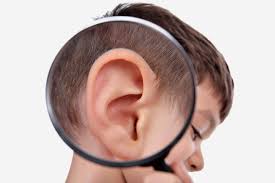An ear infection, or otitis media, is the most common cause of earaches. Although this condition is a frequent cause of infant distress and is often associated with children, it can also affect adults.
The infection in the middle ear (the space behind the eardrum where tiny bones pick up vibrations and pass them along to the inner ear) very often accompanies a common cold, the flu, or other types of respiratory infections. This is because the middle ear is connected to the upper respiratory tract by a tiny channel known as the Eustachian tube. Germs that are growing in the nose or sinus cavities can climb up the Eustachian tube and enter the middle ear to start growing.
Most parents are frustratingly familiar with ear infections. Except for wellness baby visits, ear infections are the most common reason for trips to the pediatrician, accounting for approximately 30 million doctor visits a year in the U.S.



 Contact Us
Contact Us







 Hospitals
Hospitals
 Doctors
Doctors
 Diagnostic
Diagnostic
 Pharmacy
Pharmacy
 Health Tips
Health Tips
 Blog
Blog

























Comments